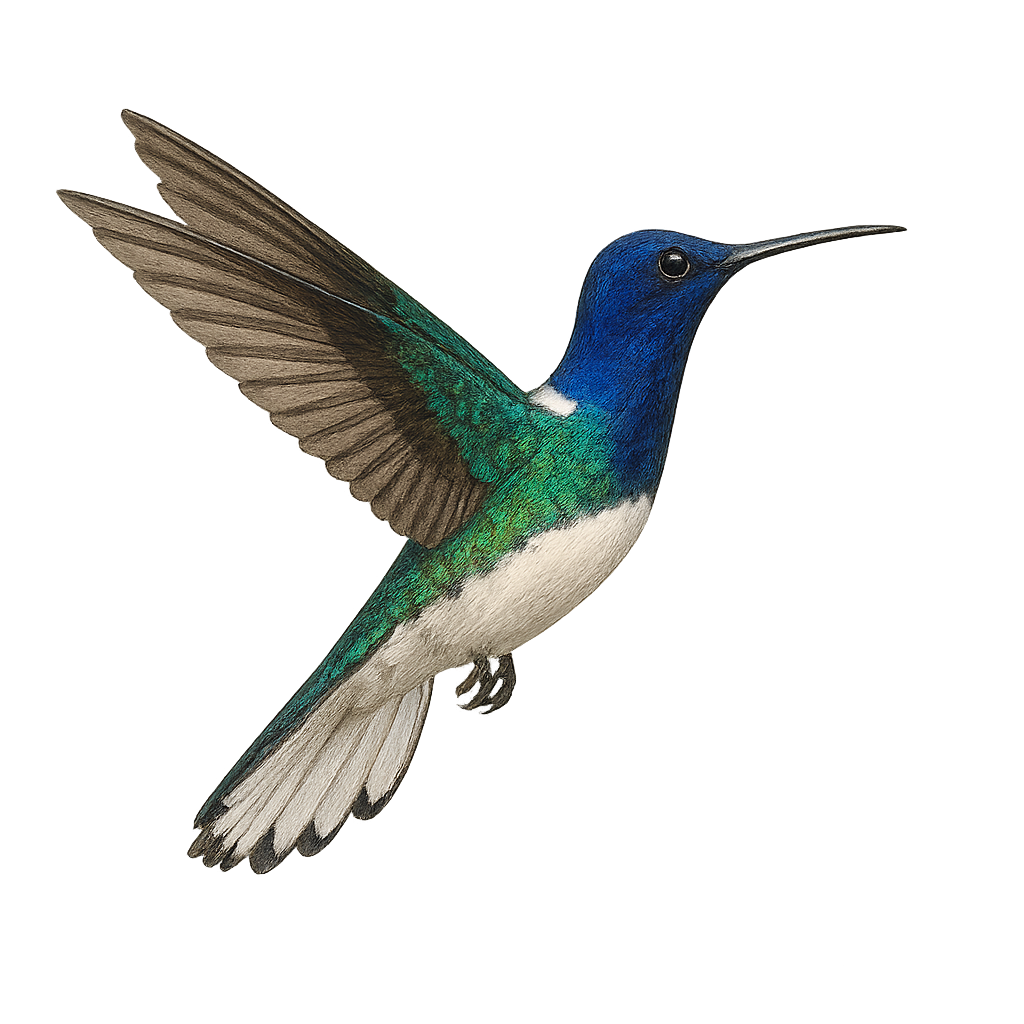Your wildlife photography guide.
Explore the white-necked jacobin in detail, study its behavior, prepare your shots.
Where to observe and photograph the white-necked jacobin in the wild
Learn where and when to spot the white-necked jacobin in the wild, how to identify the species based on distinctive features, and what natural environments it inhabits. The WildlifePhotographer app offers tailored photography tips that reflect the white-necked jacobin’s behavior, helping you capture better wildlife images. Explore the full species profile for key information including description, habitat, active periods, and approach techniques.
White-necked Jacobin
Scientific name: Florisuga mellivora

IUCN Status: Least Concern
Family: TROCHILIDAE
Group: Birds
Sensitivity to human approach: Suspicious
Minimum approach distance: 5 m
Courtship display: January to March
Incubation: 16-19 jours
Hatchings: January to April
Habitat:
humid tropical forests, forest edges, gardens
Activity period :
Primarily active during the day, with peak activity in the morning and late afternoon.
Identification and description:
The White-necked Jacobin, or Florisuga mellivora, is a bird from the Trochilidae family, easily recognizable by its striking plumage. The male boasts a bright blue head and neck, contrasting with a white chest and metallic green back. The female, on the other hand, has a duller plumage with shades of green and blue. This hummingbird is mainly found in the humid tropical forests of Central and South America, where it feeds on nectar and insects. Its fast and agile flight allows it to move easily between flowers. The White-necked Jacobin plays a crucial role in plant pollination, thus contributing to the biodiversity of its habitat.
Recommended lens:
400 mm – adjust based on distance, desired framing (portrait or habitat), and approach conditions.
Photography tips:
To photograph the White-necked Jacobin, it is advisable to use a 400mm lens or longer to capture the details of its plumage without disturbing it. Opt for early morning hours when the light is soft and bird activity is at its peak. A tripod can be helpful to stabilize your camera, especially if using a long focal length. Be patient and wait for the hummingbird to approach flowers for dynamic shots. Finally, use burst mode to increase your chances of capturing the hummingbird in flight.
The WildlifePhotographer App is coming soon!
Be the first to explore the best nature spots, track rutting seasons, log your observations, and observe more wildlife.
Already 1 431 wildlife lovers subscribed worldwide

